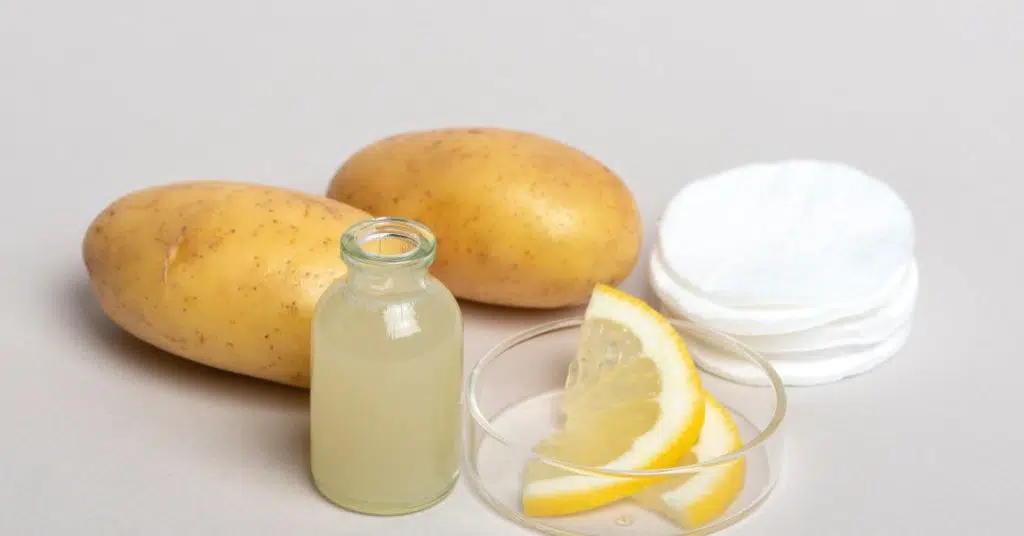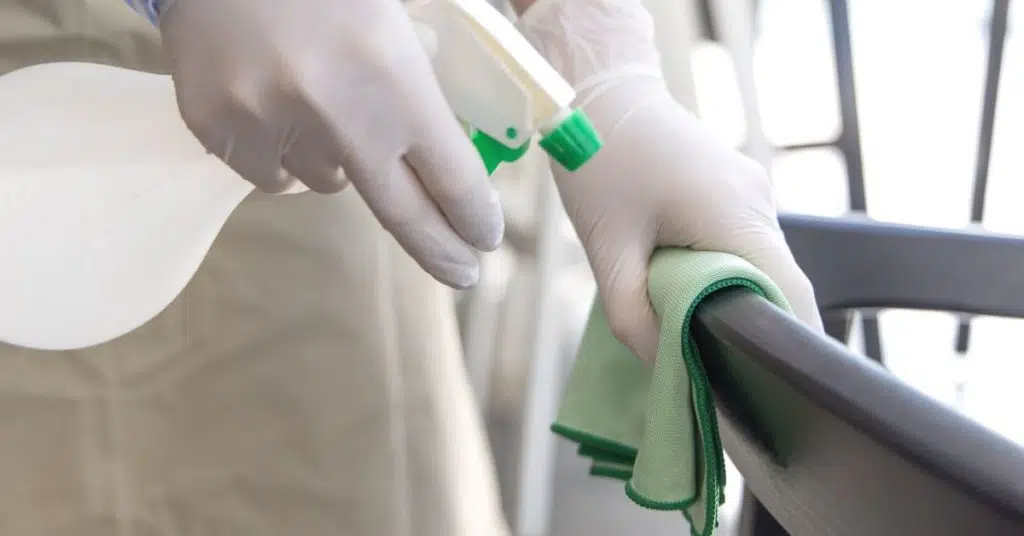A wide variety of furniture is available, each with its own look, feel, and, more importantly, construction. But as you probably know, the material that a piece of furniture is constructed of is the most significant consideration when selecting items for your home, as it will largely determine the durability as well as maintenance level of the furnishings. Metal furniture, such as steel furniture, is simple to clean and maintain using various methods, so if yours happens to be metallic but you are wondering how to maintain it stain-free or rust-free, and generally, in good form for years to come. Even while aluminum is more likely to show signs of wear and tear than iron, iron furniture can still rust.
Grease, grime, dust, and—in the instance of outdoor metal furniture—animal droppings can quickly dull the piece’s appearance. In light of this, Hellamaid compiled this upkeep guide to provide an overview of the best methods for cleaning metal furniture without going completely insane. Keep on reading to learn how.
Method #1: Remove dust using soapy water
Note: this is not intended to be applied to rusty metal furniture and should only be used on dusty or grease-stained pieces. You can restore the appearance of your metal furniture by using this simple method – sponge or scrub with a soft brush immersed in warm soapy water.
Avoid using abrasive soaps and cleaners, which can remove the protective surface, and do not let the water stay on the metal parts after washing them, as this can increase the chances of corrosion.
A number of powder cleansers are available for washing metal furniture, and the majority of them have been shown to restore the metal’s brilliance. Scrub the furniture gently with a sponge and a mixture of cleaning powder or liquid detergent added to a pail of warm water. If there are any stubborn stains or grease, you can gently remove them with a scrubbing brush. Wash the furniture using clean water and dry it off right away with a towel.
Method #2: Clean with salt, lemon, or potato
In the presence of water and air, nearly all metals deteriorate and get rusty over time. Some rust more quickly and to a larger degree than others, though. Even if you’re careful to keep water and other liquids away from the metal furniture at all times, there are some times of the year when the air is simply too humid to avoid. Therefore, you need to include anti-rust measures in your strategy for cleaning metal furniture.
It’s only natural to wonder how to actually go about doing that, though. You can get rid of rust using either lemon juice, salt, or a potato. The first approach is to use a mixture of salt and lemon juice to treat visible rust. Allow the mixture to set for not more than 20 minutes, then scrub it with a gentle brush. Wash it off and pat it dry.
The second choice is to cut a potato in half, sprinkle salt on one side, then use the other side to brush off stubborn rust from your furniture. Lastly, dust and grime should be removed with a clean cloth.
Method #3: Make a baking soda paste
Note: Baking soda only works on very light rust. You should apply the preceding procedure on metal furniture that has rusted excessively.
Baking soda’s properties as a stain remover, particle dislodger (including those that soaps can’t reach), and odor absorber make it a useful natural cleaning product. Others, however, praise the powder for its abrasive properties and claim that it produces a potent alkaline solution that can eliminate rust when mixed with water.
Restore your somewhat rusted furniture using a baking soda and water mixture. You just need to mix a large amount of baking soda with a small quantity of water to create a thick paste. Put the paste on the rusted spot and let it sit for one to two hours or until it is thick enough to prevent dripping. After applying the paste, rub against the rust with an old toothbrush until the furniture is free of all traces of dirt and grime. When you’re done, give your metal furniture the final rinse, then dry it off with a towel.
Method #4: Utilize glass cleaner to remove fingerprints
Several methods exist for maintaining the dazzling finish of your stainless steel furniture. Stainless steel home appliances and furniture exude timeless sophistication with their understated elegance. However, they are equally vulnerable to fingerprints because the imprints may be easily seen. Glass cleaners not only work well for glass surfaces, but they can also successfully remove fingerprints off stainless steel furniture.
Using a glass cleaner to get rid of fingerprints on stainless steel furniture is recommended by applying the cleaner several times to a lint-free cloth and then wiping the furniture down in a circular pattern. Avoid putting glass cleaners directly on your stainless steel furnishings at all costs, as this may leave permanent marks. Finally, after cleaning, rinse the furniture and dry it with a towel.
Method #5: Use oxalic acid
Oxalic acid works well in removing stubborn rust stains. Additionally, oxalic acid was shown to be significantly more effective than white vinegar when it came to rust removal.
Oxalic acid may be used in a four-step process to remove even the most stubborn forms of rust effectively. Step one is to take all necessary precautions, including covering exposed skin and avoiding contact with your eyes, hands, and nose. The rusted area must next be washed using liquid soap and then dried in preparation for the next procedure. The next step is to combine five teaspoons of oxalic powder with a cup of water to generate an oxalic acid solution. After applying the mixture, clean it with steel wool, then wash it with water and dry it with a towel. That’s how easy it is!
Method #6: Clean using milk and baby powder
Note: This method must be applied on galvanized metal furniture only.
If you have metal furniture manufactured from galvanized steel, this is the proper way to clean it. The alkaline buildup can deteriorate the zinc oxide coating on galvanized steel. Since alkaline substances build on galvanized metals due to their chemical attraction to these substances, the protective coating is gradually worn away, leaving your furniture looking dull and hazy and vulnerable to further deterioration.
Cleaning your furniture immediately with a mixture of milk and baby powder is recommended to avoid this problem. It would be best if you start by rinsing your furniture using clean water to remove any dirt or dust before following the steps for washing it using warm water and soap. Then, apply the baby powder and milk combination to your furniture using a soft bristle brush. Make an effective baby powder and milk cleaning solution consisting of a mixture of 33% baby powder and 67% milk. Finally, spray your furniture with a hose and dry it with a towel.
Method #7: Clean with an acidic solution
Note: This method must be applied to aluminum furniture only.
Aluminum is more vulnerable to dings, scratches, and other blemishes that make it appear dirty. Stains on metal surfaces are easier to remove than those deep within the pits and scratches that are left behind.
You can quickly clean your furniture, so let’s do that now before we worry about eliminating those marks, which are a must-do to prevent additional deterioration after cleaning. Using an acidic solution like vinegar or lemon juice to accomplish this task is highly recommended. Simply add a few teaspoons of distilled white vinegar or lemon juice to a bucket of hot water. Finally, use a microfiber towel dipped in the hot solution to wipe down your furniture.
Always keep a cleaning brush handy in order to remove any stains that scratches or other blemishes may have hidden. After that, you can wash the furniture dry and fix the dents by coating and sanding them. When preparing your vinegar solution, use one tablespoon of acid for every 1.06 liquid quart of t water.
Method #8: Apply a vinegar-water spray
Note: This method must be applied to wrought iron furniture only.
Wrought iron furniture has a tendency to collect dust due to its refined textures. This means that dust and debris are more likely to become lodged in the nooks and crannies of these textures, making them more difficult to clean. It is recommended to clean wrought iron twice or three times a year, bring it indoors for the winter, and wax it once or twice a year with automotive spray wax.
Thus, before you start cleaning wrought iron furniture, it is best to vacuum or blow out any dust that may have accumulated first. Then, spray the wrought iron with a solution of equal parts vinegar and water, wipe off the liquid and any dirt with a microfiber towel, and dry it with a soft cloth.
Hope you learn a lot from this article. If you find it useful, please share it with your family and friends!































